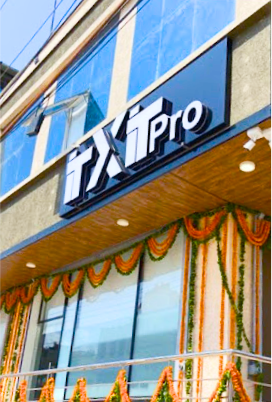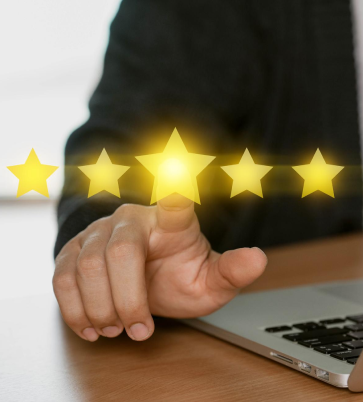
Speed is more than just a technical metric; it’s a core part of your customer experience and business success. A slow-loading Shopify store not only frustrates users but also hurts conversions, search engine rankings, and revenue. That’s where Shopify speed optimization service steps in.
This guide breaks down everything you need to know about improving your store’s performance, from Shopify mobile speed optimization services to advanced site speed optimization techniques. Whether you’re just starting or running a high-traffic store, this guide will help you make smart improvements that lead to tangible results.
Why Speed Matters in Shopify Stores?
Your website is your storefront. Studies show that even a one-second delay in page load time can lead to a 7% reduction in conversions. On mobile devices, where internet connections vary widely, this becomes even more critical. Google also considers page speed a ranking factor, affecting your SEO.
If your store is slow, shoppers will bounce. They won’t stick around waiting for images to load or buttons to become clickable. The faster your site, the better the experience—and the higher your conversion rates.
Common Causes of a Slow Shopify Store
Before applying any shopify page speed optimization services, it’s important to understand the bottlenecks. Here are the most common culprits:
- Large, unoptimized images
- Too many apps running in the background
- Heavy use of JavaScript and CSS
- Unnecessary redirects
- Not using lazy loading or image compression
- Slow or bloated themes
Understanding these will allow for targeted fixes that don’t just slap a Band-Aid on the problem.
Step-by-Step Shopify Speed Optimization
1. Optimize Images
High-quality product photos are important, but they shouldn’t come at the expense of speed. Use tools like TinyPNG or ImageOptim to compress images before uploading. Shopify also supports WebP, a next-gen image format.
2. Use Lightweight Themes
Many Shopify themes are feature-rich but come at a cost: speed. Select a lightweight, performance-optimized theme or work with a Shopify development service to streamline your current one.
3. Remove Unused Apps
Apps are one of the biggest speed killers in Shopify. Audit your installed apps and remove those you don’t use. Every app adds code and functionality that might affect load time.
4. Minify CSS and JavaScript
Minifying involves removing whitespace, comments, and unused code. Tools like UglifyJS or CleanCSS can help. Shopify’s Liquid theme engine also supports asset compression.
5. Enable Lazy Loading
Lazy loading ensures that images load only when they enter the viewport. This dramatically improves perceived load times, especially on long product or blog pages.
6. Use a CDN
Shopify automatically uses a CDN (Content Delivery Network), but you can optimize how your resources are delivered. Talk to your Shopify development service about further customization.
Mobile Optimization: A Must-Have!
With over 70% of eCommerce traffic coming from mobile devices, ignoring mobile performance is a huge mistake. Shopify mobile speed optimization services focus specifically on speeding up mobile versions of your site.
Techniques include:
- Using responsive images
- Prioritizing above-the-fold content
- Reducing server response time
- Minimizing third-party scripts
Good mobile optimization improves user engagement and directly impacts your conversion rate.
How Shopify Speed Optimization Affects SEO?
Speed isn’t just about user experience—it’s also an SEO factor. Google uses Core Web Vitals as part of its ranking algorithm, which includes metrics like First Input Delay (FID), Largest Contentful Paint (LCP), and Cumulative Layout Shift (CLS).
Improving these through Shopify website speed optimization can give your store a better chance to rank higher, especially in competitive niches. Pairing these efforts with a professional SEO service can further enhance your visibility.
Partnering with the Right Experts
Optimizing speed isn’t a one-time task; it’s an ongoing process. That’s why many brands invest in professional page speed optimization services that offer:
- Continuous performance monitoring
- Regular updates and tweaks
- Compatibility checks after theme or app updates
- Advanced debugging tools
Working with experts who also offer digital marketing services ensures that your site doesn’t just perform well but also converts effectively.
Real Benefits of Shopify Site Speed Optimization
- Higher Conversions: Faster sites keep users engaged and reduce cart abandonment.
- Better SEO Rankings: As mentioned, speed affects your position on search engines.
- Improved User Experience: Smoother navigation and quicker load times create a pleasant shopping experience.
- Lower Bounce Rates: Visitors are more likely to stay and explore.
- More Mobile Sales: Mobile-optimized sites are crucial for tapping into mobile-first shoppers.
How to Measure Your Shopify Store Speed?
Before diving into improvements, one of the most critical steps in the Shopify speed optimization service process is benchmarking your current site performance. This isn’t just a one-time action—it’s a continuous process that ensures all your optimization efforts are actually delivering results. Measuring performance accurately before and after implementation provides clarity on what’s working, what needs improvement, and how your site stacks up against industry standards.
Here are a few powerful tools you should consistently use to evaluate your Shopify store’s speed:
1. Google PageSpeed Insights
Google PageSpeed Insights is a go-to tool for developers and marketers alike. It provides both mobile and desktop performance scores, alongside actionable recommendations. It dives deep into technical elements like render-blocking resources, unused CSS, image optimization, and overall page structure. What makes it especially valuable is the “Core Web Vitals” report, which highlights user experience metrics like First Contentful Paint (FCP) and Largest Contentful Paint (LCP)—crucial for any page speed optimization services strategy.

2. GTMetrix
GTMetrix gives a detailed breakdown of your website’s loading process through its waterfall chart. This is ideal for identifying which scripts, images, or third-party apps are slowing down your store. GTMetrix also assigns a performance score and gives tailored insights into improving load time, fully loaded time, and total page size, making it an essential companion to Shopify site speed optimization initiatives.

3. Shopify Analyzer
Developed specifically for Shopify stores, this tool offers a customized performance analysis based on Shopify’s platform constraints and features. It evaluates Shopify apps, theme structure, unused JavaScript, and other Shopify-specific bottlenecks. Since many general tools may not fully understand Shopify’s backend architecture, Shopify Analyzer adds significant value to your Shopify website speed optimization workflow.

Track, Compare, and Log
It’s not enough to run these tools once. Speed optimization isn’t a one-time fix; it’s an ongoing process. Every new app you install, image you upload, or feature you add can impact performance. That’s why it’s critical to track changes regularly and maintain performance logs. Keep a record of:
- Pre-optimization and post-optimization scores
- Changes made (theme updates, code adjustments, new app integrations)
- Load times on mobile and desktop
- Monthly performance trends
Over time, these logs help identify patterns and bottlenecks, giving you a proactive approach to maintaining and improving your store’s speed.
When working with an expert team like ITXITPro, this kind of structured monitoring becomes part of a larger strategy. Their use of cutting-edge tools, combined with professional insights, ensures your Shopify mobile speed optimization services or desktop optimizations are constantly refined for better performance.
Integrating Speed with Other Services
Speed alone doesn’t make a successful online store. While lightning-fast load times are critical, they must be part of a broader, more strategic framework. For instance, integrating speed efforts with ecommerce website development service ensures your store not only loads fast but also offers seamless navigation, responsive design, and user-friendly features. Pair that with a strong SEO service, and your store becomes discoverable on search engines, drawing in more organic traffic. Without these foundational elements working together, even the fastest website risks poor engagement and low conversions.
Now, imagine this: your Shopify store loads in under two seconds, is structured with SEO best practices, features compelling product descriptions and blogs developed through a top-tier digital marketing service, and is technically sound from front end to back end. That’s not just a store—that’s a high-performing digital asset. This holistic approach ensures that your speed optimization efforts are amplified by content visibility, design clarity, and overall user experience. Together, they build a sustainable model for growth, keeping customers engaged and ready to convert.
Shopify Speed Optimization Checklist
Use this comprehensive checklist to evaluate whether your Shopify store is truly optimized for speed and performance. Each point targets a specific area that impacts loading time, user experience, SEO rankings, and ultimately—conversion rates. Check here the Shopify website Speed Optimization Checklist:
1. Compressed and Optimized Images
- What to check: Are all images compressed without losing quality?
- Why it matters: Large images are one of the biggest culprits for slow page loading.
- How to fix: Use tools like TinyPNG or Shopify apps like Crush Pics or Image Optimizer.
2. Lazy Loading Enabled
- What to check: Are images and videos loading only when users scroll to them?
- Why it matters: Lazy loading prevents unnecessary content from slowing down initial load times.
- How to fix: Enable lazy loading via theme customization or speed optimization apps.
3. Minified CSS, JavaScript, and HTML
- What to check: Are your site files reduced in size by removing whitespace and comments?
- Why it matters: Smaller files load faster.
- How to fix: Use Shopify’s theme settings or work with a Shopify development service to implement file minification.
4. App Bloat Eliminated
- What to check: Are there unused or outdated apps installed?
- Why it matters: Every app adds code—slowing down your store if not optimized.
- How to fix: Audit your apps and remove ones that aren’t essential.
5. Efficient Theme Code
- What to check: Is your theme lightweight and optimized?
- Why it matters: Heavy themes drag down site performance.
- How to fix: Choose a well-coded, performance-focused theme or hire experts offering Shopify speed optimization service.
6. Critical CSS Loaded First
- What to check: Is the CSS required for the visible part of your site loading before everything else?
- Why it matters: It ensures that users see content quickly.
- How to fix: Use tools or a developer to inline critical CSS.
7. Reduced Redirect Chains
- What to check: Are your internal links direct, without unnecessary redirects?
- Why it matters: Each redirect adds loading time.
- How to fix: Audit redirects using Google PageSpeed Insights or GTmetrix.
8. Fast Mobile Load Speed
- What to check: Does your store load in under 3 seconds on mobile?
- Why it matters: Mobile users bounce quickly if a page is slow.
- How to fix: Work with Shopify mobile speed optimization services to optimize specifically for mobile devices.
9. Browser Caching in Place
- What to check: Is your site storing frequently accessed files in browsers?
- Why it matters: Returning visitors load pages faster.
- How to fix: Use Shopify’s built-in caching or install optimization plugins.
10. Google PageSpeed Score of 80+
- What to check: Run your URL on PageSpeed Insights—what’s your score?
- Why it matters: A high score indicates strong performance.
- How to fix: Implement suggestions from the report or consult a page speed optimization service.
11. Preloaded Key Assets
- What to check: Are fonts and key scripts being preloaded?
- Why it matters: Preloading critical assets reduces wait times.
- How to fix: Modify the theme.liquid file to add preload directives.
12. Reduced Third-party Scripts
- What to check: How many scripts are loading from external services?
- Why it matters: Third-party tools can drastically slow down loading
- How to fix: Remove or replace heavy third-party integrations.
Why Speed is Non-Negotiable
Speed is non-negotiable in today’s competitive eCommerce environment. A slow-loading website doesn’t just annoy users, it directly impacts bounce rates, SEO rankings, and conversions. Every second counts. That’s why investing in professional Shopify website speed optimization isn’t just a good idea, it’s a business-critical strategy.
Whether your primary challenge lies in desktop performance or mobile load times, consistency and precision are key. For instance, Shopify mobile speed optimization services specifically target issues that affect mobile browsing behavior, which now makes up a significant share of online shopping.
To truly succeed, businesses should partner with professionals who offer end-to-end page speed optimization services. This ensures not only faster loading times but also a more intuitive user experience, better customer retention, and higher sales.
As a trusted name in performance-driven digital solutions, ITXITPro offers a powerful combination of Shopify speed optimization service, Shopify development service, and comprehensive digital strategies. Their team understands that speed is just one piece of the performance puzzle. A site must also be designed to convert, rank well, and scale easily as your business grows.
By integrating SEO service, digital marketing service, and performance-focused development under one roof, ITXITPro helps brands build Shopify stores that don’t just load faster, they sell smarter.
So don’t just chase faster speeds. Choose a partner who will help you optimize every aspect of your Shopify store’s performance. Whether you’re starting fresh or overhauling an existing store, let speed be the foundation—and ITXITPro the architect—of your eCommerce success.
FAQs
Q1. What is a Shopify speed optimization service?
A Shopify speed optimization service involves analyzing and enhancing your Shopify store’s performance by improving load times, minimizing code bloat, optimizing media, and reducing unnecessary scripts. The goal is to deliver a faster and smoother user experience that boosts engagement and conversions.
Q2. Why is Shopify speed optimization important for my store?
Site speed directly impacts your bounce rate, SEO rankings, and conversion rate. A well-optimized Shopify store loads faster, offers a better user experience, and ranks higher in search engines—ultimately driving more sales and revenue.
Q3. How do I know if my Shopify store needs speed optimization?
If your store has high bounce rates, low conversions, or slow loading times (especially on mobile), it’s a strong indicator you need a Shopify speed optimization service. Tools like Google PageSpeed Insights, GTmetrix, and Lighthouse can help identify performance issues.
Q4. What’s included in a Shopify speed optimization service?
Typically, it includes image compression, lazy loading, app audit and cleanup, theme optimization, code minification (HTML, CSS, JS), script deferral, and performance tracking. At ITXITPro, we offer a tailored optimization plan based on your store’s current performance.
Q5. Will Shopify speed optimization affect my SEO?
Yes—positively. Faster load times are a ranking factor for Google, especially for mobile-first indexing. A well-optimized store enhances crawlability and UX, helping your pages rank higher in search results.
Q6. Can I optimize my Shopify store speed without affecting design and functionality?
Absolutely. A professional Shopify speed optimization service ensures that all improvements are implemented without compromising the design aesthetics or core functionalities of your store.
Q7. How long does it take to complete a Shopify speed optimization service?
Depending on the size and complexity of your store, optimization can take anywhere from 2–7 business days. We at ITXITPro provide a detailed timeline after a quick performance audit.
Q8. How much does Shopify speed optimization cost?
The pricing varies based on your store’s current performance and the scope of work involved. We offer flexible, performance-based packages to suit different business sizes and needs.
Q9. How often should I optimize my Shopify store speed?
Regular optimization (once every 3–6 months) is recommended, especially after adding new apps, changing themes, or uploading high-resolution media.
Q10. Why choose ITXITPro for Shopify speed optimization services?
With over a decade of experience in eCommerce performance and SEO, we deliver tailored Shopify speed optimization services that improve UX, SEO, and overall store profitability, without disrupting your operations.















